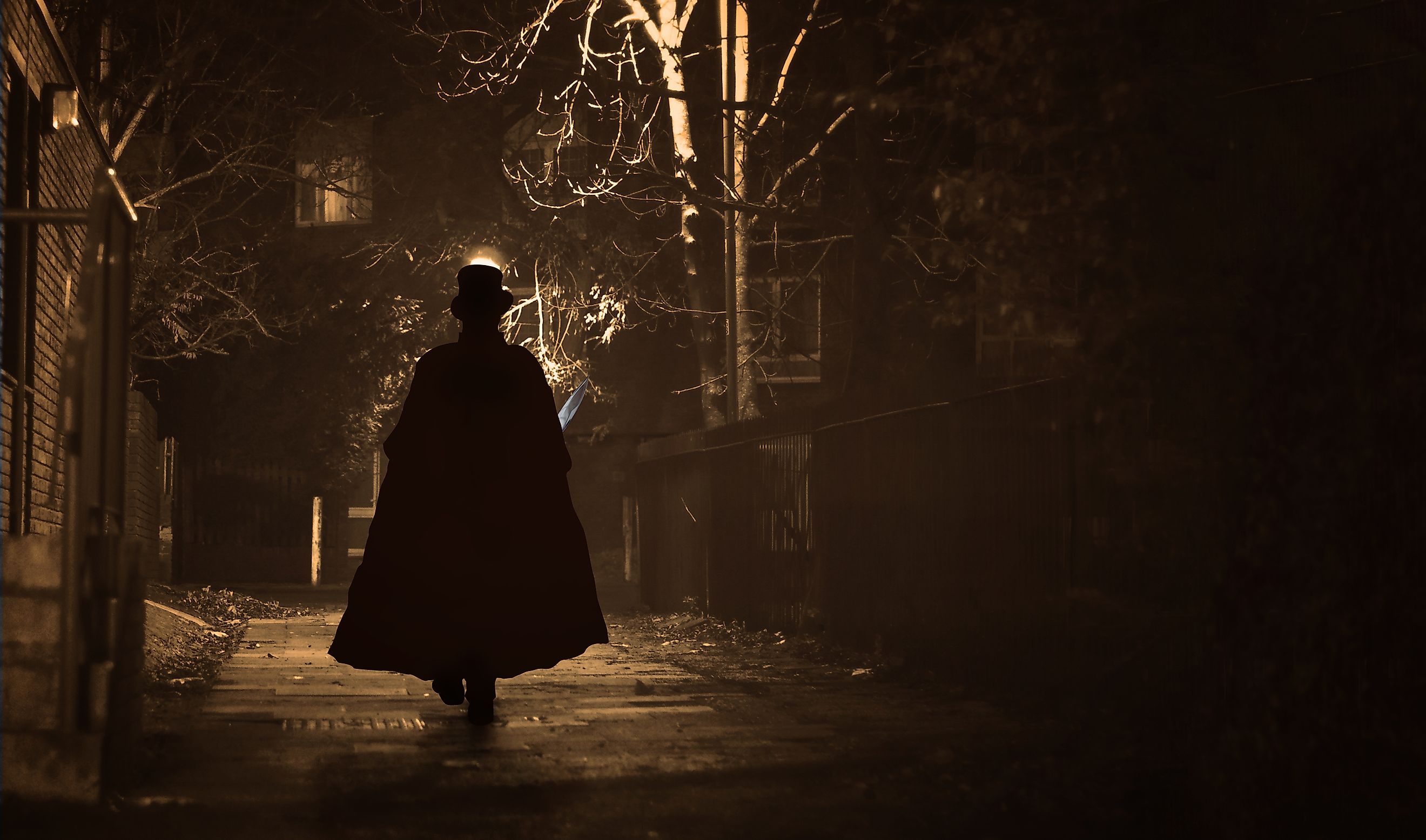
10 Creepy Urban Legends from Around the World
An urban legend is a widely circulated, often shocking or eerie story rooted in folklore, popular culture, and sometimes fact. Typically told as true, these tales often contain elements of mystery and superstition, frequently reflecting societal and cultural fears. Unlike myths or fairy tales, urban legends are usually set in modern times and tend to involve ordinary people in familiar settings, making them all the more creepy.
With the growth of the internet's popularity in the last few decades, urban legends from around the world have spread very easily. From headless ghosts in India to shapeshifting witches in the United States and Victorian-era serial killers in the United Kingdom, this article highlights some of the freakiest urban legends from around the world.
Wendigo
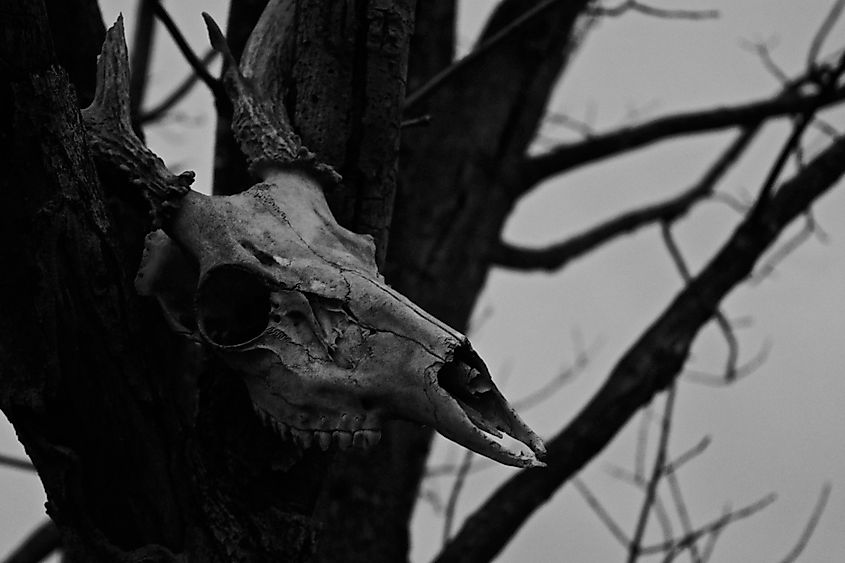
The Wendigo is a terrifying creature rooted in Algonquian folklore but has a presence in several other native cultures in North America as well, particularly from Indigenous groups in the forests of the Great Lakes and northern regions of the United States and Canada. Described as either a malevolent spirit that possesses a person or a monstrous humanoid (depending on who you ask), the Wendigo is said to embody greed and hunger and is notable for its penchant for cannibalism. According to legend, those who indulge in extreme selfishness or resort to eating human flesh are transformed into Wendigos, cursed with an insatiable hunger for more.
The appearance of a Wendigo varies across different accounts. However, in more modern pop culture, it is often depicted as gaunt, skeletal, and unnaturally tall, with skin stretched tightly over its bones. In some versions, it is also said to have antlers or the head of a deer, adding to its horrifying appearance. Whether possessing an unfortunate human or taking on its more monstrous form, it is said to have superhuman strength, speed, and a chilling voice that can mimic human cries for help, luring victims to their doom.
Many believe the legend of the Wendigo is simply a tale made up to warn against gluttony and losing one's humanity to desperation, something common in the northern reaches of the continent where food is often sparse in the colder seasons. This legend still endures in popular culture, cementing the Wendigo as one of North America’s most well-known urban legends.
Kuchisake-Onna
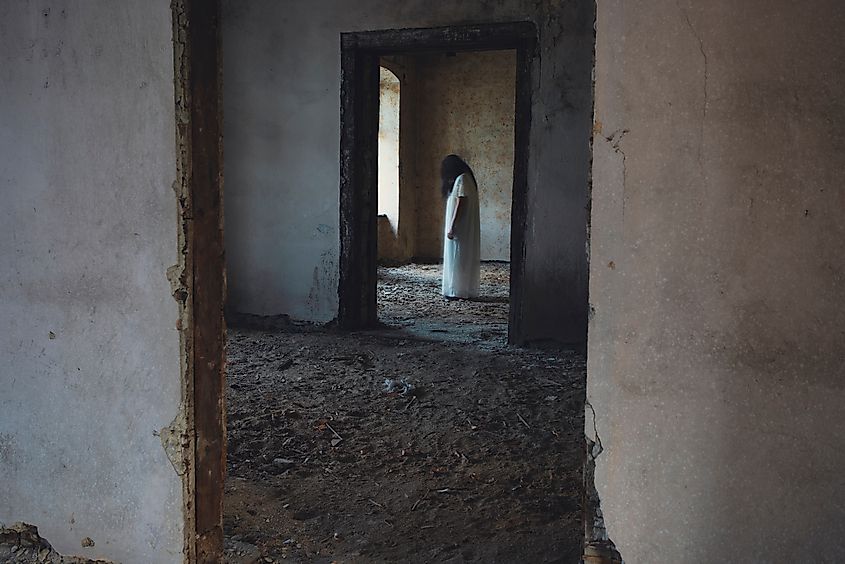
Kuchisake-Onna, or the "Slit-Mouthed Woman," is a creepy urban legend from Japan. According to the tale, she is the spirit of a woman who was mutilated and left with a grotesque, ear-to-ear slit across her mouth during the Heian period (A.D. 794-1185). In life, Kuchisake-Onna was said to be a beautiful woman, often portrayed as a samurai's unfaithful wife or concubine. In a fit of jealous rage, he sliced her mouth, leaving her disfigured before her untimely death. A death so brutal and tragic is sure to create some sort of ghostly presence, right?
The angry spirit of Kuchisake-Onna now allegedly roams the streets of Japan, often appearing at night, wearing a surgical mask to conceal her disfigurement. According to legend, she approaches unsuspecting victims, typically lone travelers, and asks, “Am I pretty?” If the person answers "yes," she removes her mask to reveal her terrifying gaping wound (some tales also state that her teeth are sharp and long, like a shark's) and asks again. If they answer "no" or (understandably) scream, she kills them with a pair of scissors or another sharp object. If they say "yes" again, she slashes their face to resemble hers. There are not many great options if you run into this ghost. Are there?
There are some rumored ways to escape her, such as giving a vague answer or distracting her with candies. However, Kuchisake-Onna remains a prominent figure in Japanese urban legends, mixing an acute fear of malicious spirits with cultural anxieties about appearance and beauty.
Slenderman
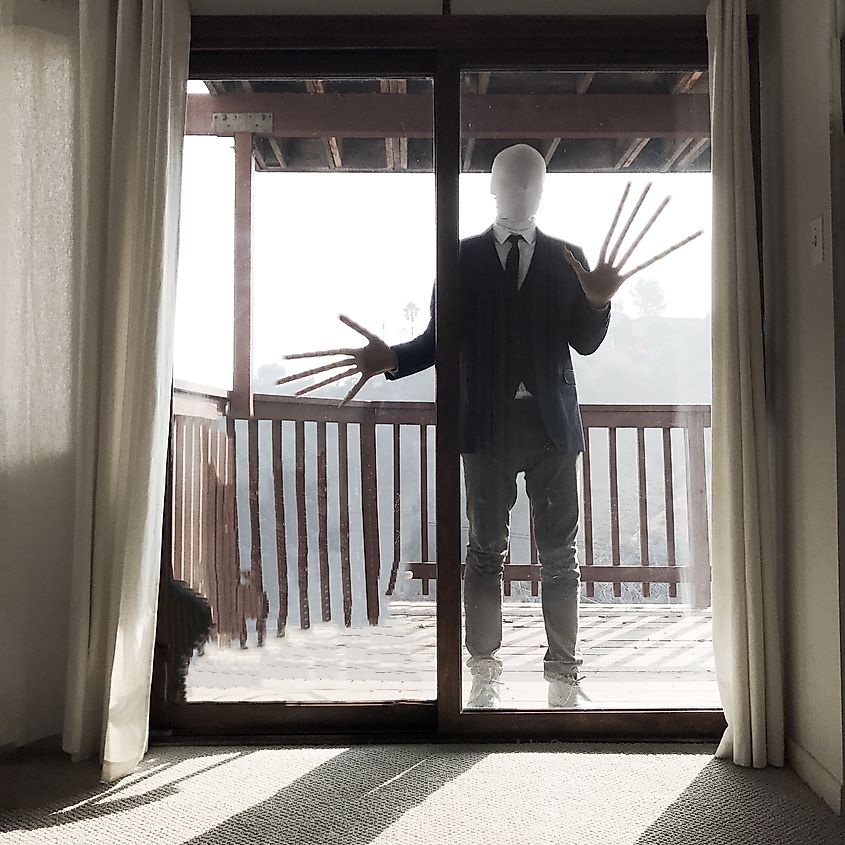
Slenderman is a more modern urban legend that originated from online forums in 2009 but has since taken on a life of its own in contemporary folklore. The figure is depicted as an unnaturally tall, thin man with elongated limbs and no facial features. Often dressed in a dark suit and tie, Slenderman is known for lurking in forests and abandoned areas, stalking his victims—primarily children. Stories surrounding Slenderman typically involve his ability to influence or control the minds of his victims, often leading them into the woods, where they vanish without a trace. His presence is also associated with feelings of paranoia, memory loss, and confusion. In some versions of the legend, Slenderman’s arms extend into tentacles that capture those who stray too close to him.
Though Slenderman's exact origins, particularly his unnerving appearance, likely lie in a Photoshop contest for creating paranormal images in 2009, it quickly became a phenomenon across the internet soon after. There are now video games, books, and even a movie based on the urban internet legend. What makes Slenderman especially terrifying is the blend of fiction and reality now associated with it. Over time, the character has been linked to real-world events, including violent acts like the case of the Slenderman stabbing in 2014, where two young girls murdered a classmate as a sort of deranged sacrifice to the character.
Skinwalkers
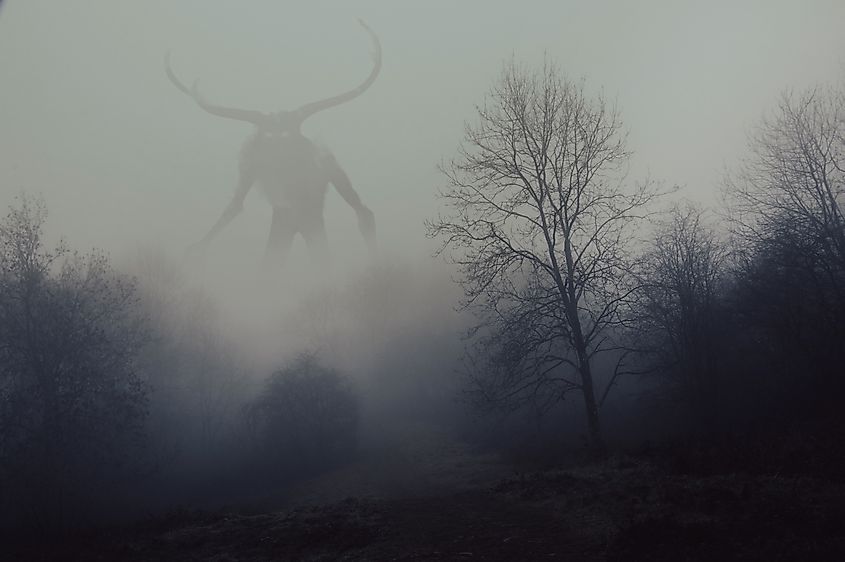
Skinwalkers are malevolent figures that are most prominent in the Navajo culture of the southwestern United States. These beings are said to be witches or shamans who possess the supernatural ability to transform into animals or even take on human form. They can allegedly blend in with groups of animals, such as wolves, coyotes, or eagles, moving with incredible speed and strength. The power to shapeshift is believed to be granted through dark magic and is often used to commit evil and unrest in the world.
According to Navajo legend, skinwalkers are feared not only for their physical abilities but for their capacity to infiltrate communities. Because of this, skinwalkers are often associated with mischief, sickness, and death, and encountering one is considered an ill omen. In modern times, many consider the legend of the skinwalkers to be more of an allegory of how evil can take many forms, innocent-looking or not, and that allowing evil into one's community can poison it as a whole.
According to this longstanding legend, the only way to defeat a skinwalker is by knowing its true identity and calling out its name. Beware, as skinwalkers are said to fight back if they feel endangered. Alleged sightings are still somewhat common across America, with dozens of videos across the internet claiming to have captured the creatures at various points of transformation.
Bunny Man

The Bunny Man is a chilling urban legend that originated in Fairfax County, Virginia, in the 1970s. The story centers around a figure, often described as a man dressed in a tattered bunny costume, who is said to haunt a remote area near Colchester Overpass, now infamously known as “Bunny Man Bridge,” an eerie-feeling destination whether the legend is true or not.
According to the stories, the Bunny Man is an escaped mental patient who, after his transport vehicle crashed on the way to the asylum, took refuge in the woods and began killing rabbits for food, hanging their carcasses from trees. As the legend grew in popularity, people added more grisly details. In some versions, the Bunny Man is said to have murdered fellow escapees, hanging their bodies from the overpass as well. Assuming he may be dead by now, his spirit, or possibly his successor, is believed to still stalk the area, armed with an axe and attacking those who come too close to the bridge, particularly around Halloween.
Though the legend is based loosely on a few reported sightings, there is no officially documented evidence of the Bunny Man’s existence. However, the stories persist, drawing curious thrill-seekers to the bridge each Halloween.
Kongamato
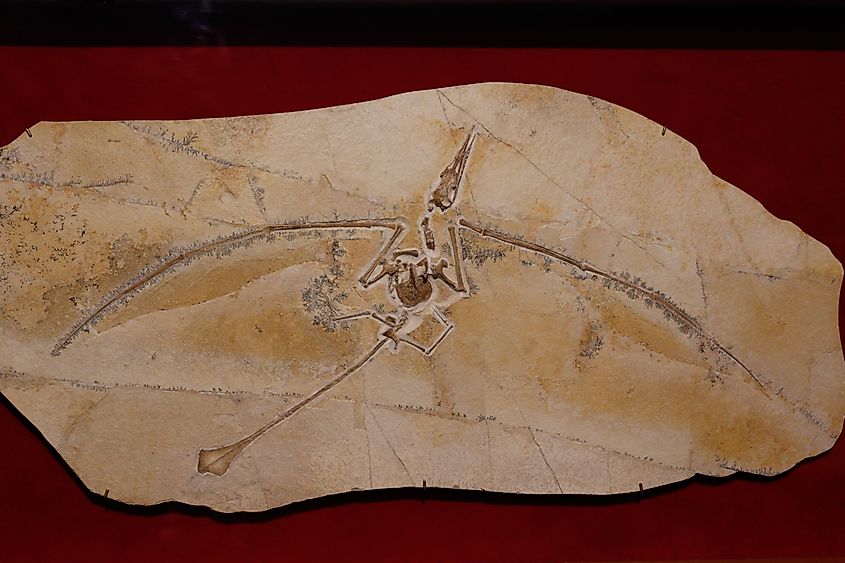
The Kongamato is a cryptid from Zambia, Angola, and Congo, often described as a massive pterosaur-like creature. This mysterious being is said to inhabit these regions' remote swamps and riverbanks, particularly the Jiwundu swamps. The name "Kongamato" translates to "overwhelmer of boats," reflecting the creature’s supposed aggressive nature, especially towards those who venture too close into its watery territory. Eyewitnesses describe the Kongamato as a large, flying reptile with leathery wings, a long snout full of sharp teeth, and reddish skin. Its wingspan is reported to be between four and seven feet, resembling the prehistoric pterosaurs that were thought to have gone extinct millions of years ago. Many locals claim that the Kongamato likes to attack small boats and can cause fatal injuries to humans who encounter it.
While no definitive evidence exists to confirm the Kongamato's existence, reports have persisted for decades. In one case in the 1950s, a man who arrived at a hospital in Mansa, Zambia, with a chest wound, alleged the Kongamato attacked him. Some speculate it may be a surviving species of prehistoric bird or reptile, while others consider it purely a myth born from the unexplored wilderness of central Africa. Nevertheless, the continuing urban legend of the Kongamato fascinates and frightens locals and cryptid experts worldwide.
Jack the Ripper
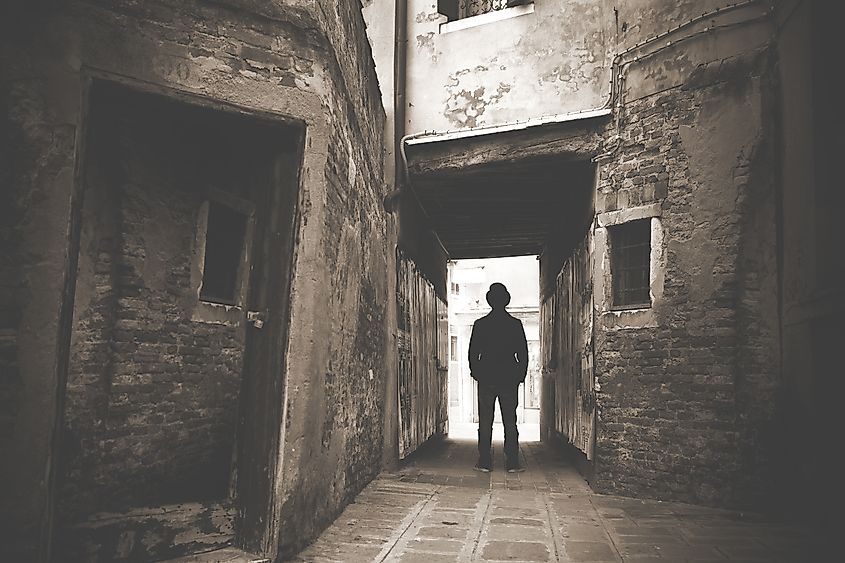
Jack the Ripper is one of history's most infamous and enigmatic figures, a serial killer who terrorized London’s Whitechapel district in the late 1880s. This urban legend is especially haunting because the Ripper’s identity was never uncovered, fueling over a century of speculation and conspiracy theories. Jack the Ripper's victims totaled five women, all brutally murdered and mutilated in sickening ways. The killer’s gruesome methods, involving precision cuts that suggested a level of anatomical knowledge, lead some to believe the Ripper was either a doctor or butcher. The name "Jack the Ripper" came from a taunting letter allegedly sent by the killer to the police, though its authenticity is still debated.
The Ripper’s spree in the narrow, fog-filled streets of Victorian London sent shockwaves through the city, and his ability to elude capture, despite intensive investigation, only deepened the mystery. Numerous suspects have been proposed over the years, ranging from royal family members to local lunatics, but none are proven as crimes by Jack the Ripper. Although the crimes this killer committed are verifiably real, the search for his or her identity is what fuels Jack the Ripper to be one of the most widespread urban legends of all time.
Dow Hill Forest

The Dow Hill Forest, located in Kurseong, India, is notorious for being one of the most haunted places in the country. Situated in the Darjeeling district, this dense, mist-filled forest at the base of the Himalayan Mountains has become the center of several chilling urban legends and ghost stories that have unsettled locals and visitors alike. The most well-known tale revolves around mysterious footsteps that echo through the forest, even when no one is present. Many also report intense feelings of being watched while in the area. Moreover, some claim to have seen a headless boy following them while traversing the narrow forest paths, only to disappear among the trees if ignored. The path with the most notorious sightings is aptly known as "Death Road."
Nearby, the century-old Victoria Boys' High School has its own share of ghostly legends. Many believe that paranormal activity occurs within the abandoned sections of the school, where people can hear inexplicable laughter and footsteps. The chilling atmosphere and the persistence of these eerie stories in this region draw paranormal enthusiasts from India and abroad, making it one of the more macabre vacation spots in this vast and beautiful country.
La Llorona
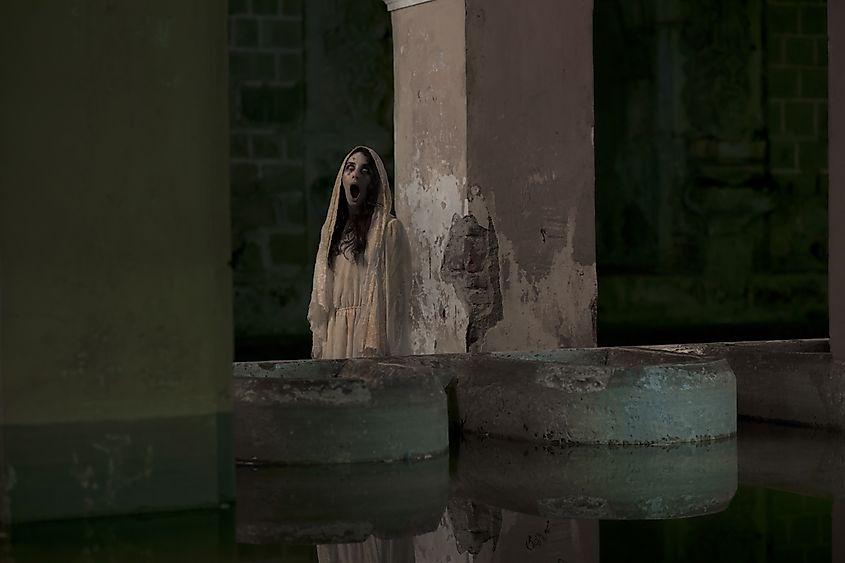
La Llorona, or "The Weeping Woman," is one of the most widespread and feared urban legends in Mexico and other Latin American countries. The story of La Llorona tells of a woman who, in a fit of grief or rage, drowned her children in a river. Overcome by guilt for what she had done, she took her own life. Instead of finding peace, she was instead cursed to wander the earth, forever searching for her lost children.
According to eyewitness accounts, La Llorona is often seen by rivers or lakes, her ghostly figure dressed in white. She wails and sobs uncontrollably, calling out, “Oh, my children, we are about to go forever!" Some versions of the tale say that she kidnaps children who stray too close to the water, mistaking them for her own. Those who encounter her often describe an overwhelming feeling of sadness and dread, followed by her haunting cries.
Many believe La Llorona’s legend is rooted in pre-Columbian indigenous myths and Spanish colonial tales. Though the story varies across regions, it continues to be passed down through generations. It serves as a semi-serious ghost legend and a cautionary tale for children to stay away from dangerous waters.
The Licked Hand

"The Licked Hand" is an unverified yet extremely unsettling urban legend passed down through generations, primarily in modern Western cultures. The story usually involves a young girl left home alone for the night. To feel safe, she allows her dog to sleep under her bed, which licks her hand occasionally, comforting her as she tries to sleep.
As the night progresses, the girl hears noises from the nearby bathroom, like scratching or dripping sounds, causing her to continue reaching down to feel her dog’s reassuring licks. Unable to sleep with the continuing noise, she decides to be brave and investigate. She follows the noise to its source, where she finds a horrifying sight: her dog is dead! Written on the wall in blood are the words: "Humans can lick too."
Although no actual examples of this urban legend have officially been reported, it remains an incredibly unsettling story that everyone should hope remains fiction instead of fact.
What is the Scariest Urban Legend Near You?
These are just some of the most popular urban legends from around the world. If you dig deep enough, you will probably discover that your own city or town has its fair share of creepy stories that may or may not be true as well. So, are you brave enough to verify what exactly goes bump in the night? Perhaps you'll remain an armchair detective and learn more about the above-mentioned legends vicariously. There’s no need to worry. If even half of these urban tales are real, the world truly is a strange one.











